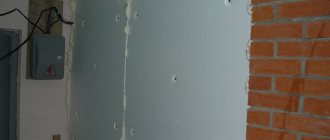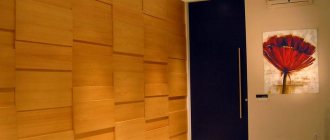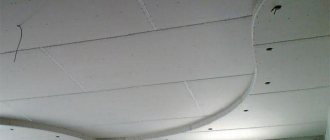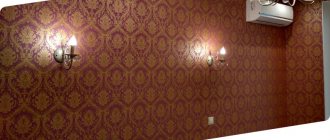Laying wires and cables in a groove is a procedure accompanied by considerable noise and dust, but without this process it is impossible to install electrical wiring in the room.
All wires must be hidden, but how to do this without gating if it concerns a flat concrete or brick wall? What if there are large cables waiting in front of us, precisely at the point of connection to the distribution boards.
First thing - plaster or wires?
What type of work to carry out first is determined by the volume of work performed and the thickness of the electrical wires. Thin wire can be laid without groove equipment. It can be laid on the surface of the wall and covered with a layer of plaster.
If the size of the wire does not allow it to be hidden on the outer surface of the wall, then it is necessary to perform gating. Then, first, the wires are laid in a groove along the entire electric main, and only then the walls are plastered. Sockets for electrical switches and electrical sockets are equipped upon completion of plastering work; their installation is carried out after wallpapering the walls or laying decorative plaster.
If plastering is done before laying the wires, then it is easier to make the groove. Since plaster has a lower density than stone (concrete), there will be a minimum of dust during the work.
Connecting TV to a Wi-Fi network
Mistake #4
Connecting the TV to the Internet only via Wi-Fi without installing an Internet cable.
Some customers, even at the repair stage, are trying to convince electricians that it is not at all necessary to knock out walls or throw in extra UTP cables; it is enough to provide for connecting the TV only via a Wi-Fi module.
All modern equipment supposedly works this way. This is much more aesthetically pleasing (there will be no wires) + will save the budget (minus cable, grooves, plaster).
Even at the dawn of the advent of wireless networks, they said that the wire would soon die out, but there was one problem.
The higher the speed, the higher the frequency of the signal; the higher the frequency, the worse it passes through obstacles (walls, doors, etc.).
If you are actually doing a full-fledged rough renovation, always place a separate Internet cable with its own outlet under the TV.
Connecting via Wi-fi is only advisable when the apartment is undergoing cosmetic work without compromising the integrity of the wallpaper and ceiling. Any Wi-Fi access point is not unlimited and has a certain client capacity.
At one “wonderful” moment, someone will simply no longer have enough bandwidth. And another important detail that not everyone knows - the more different routers you and your neighbors have, the lower the wi-fi speed .
Therefore, if it is possible to connect PHYSICALLY via a cable, always connect with a cable!
Leave Wi-Fi for TV only as an additional feature.
Marking
Issues of gating and laying electrical cables are resolved at the initial stage of renovation of the room, even before the decorative design of the walls. Future cable channels are marked on the walls using a level, pencil and ruler. The marking begins from the installation locations of distribution panels, distribution boxes, switches, and sockets. Next, the route for laying the wires is outlined.
Rules for placing electrical network elements:
- wiring is laid strictly horizontally or vertically;
- the wiring is laid under the ceiling, connected to switches (sockets) from distribution boxes through vertical channels along the wall;
- Diagonal cable laying is not allowed; installation in inclined channels is possible only on flights of stairs and attics, provided they are laid parallel to the plane of the room;
- the size of the groove depends on the number and size of the installed electrical wires;
- wires are placed below the ceiling, floor beams at a distance of twenty or thirty centimeters, from the corners of the room at a distance of no closer than ten centimeters, in places where all kinds of pipes are located no closer than fifty centimeters.
- electrical sockets are equipped at a height of no lower than 30 centimeters from the floor level, and for switches - no lower than 90 centimeters.
These rules also apply to television wires.
Wi-Fi hotspots
A router near the front door for distributing Wi-Fi for an apartment with an area of 50 m2 or more is a very bad solution.
Mistake #5
A special bad manners is placing a Wi-Fi router in a metal switch cabinet behind a metal door or in a closet behind a mirror











